This article was co-authored by Laura Marusinec, MD. Dr. Marusinec is a board certified Pediatrician at the Children's Hospital of Wisconsin, where she is on the Clinical Practice Council. She received her M.D. from the Medical College of Wisconsin School of Medicine in 1995 and completed her residency at the Medical College of Wisconsin in Pediatrics in 1998. She is a member of the American Medical Writers Association and the Society for Pediatric Urgent Care.
There are 39 references cited in this article, which can be found at the bottom of the page.
wikiHow marks an article as reader-approved once it receives enough positive feedback. In this case, 100% of readers who voted found the article helpful, earning it our reader-approved status.
This article has been viewed 1,192,129 times.
Thrush is caused by an overgrowth of a type of yeast, called candida albicans. The medical term for a thrush infection is called oral candidiasis.[1] While candida is part of your body’s natural organisms, sometimes the normal balance gets disrupted, making it easy for the yeast cells to grow. Oral candidiasis causes white, creamy-looking patches on your tongue and inner cheek. The patches can spread to other areas, including your throat, gums, the roof of the mouth, and even your esophagus. It’s best to seek medical treatment if you develop thrush. Home treatment options are also available.
Steps
Treating Thrush with Prescription Medications
-
1Know what causes thrush. Thrush, or oral candidiasis, is caused by an overgrowth of a type of fungus, or yeast, called candida albicans.[2] Candida is a normal part of the body.[3]
- Candida albicans is naturally found throughout the gastrointestinal tract, including the mouth. Candida is also a normal resident of the skin.
- A thrush infection happens when the candida albicans yeast cells find a source of nutrients they like, and grow beyond what is considered normal.
-
2Recognize the symptoms. White, patchy areas on the tongue, and other parts of the mouth are the most common symptom.[4]
- Additional symptoms include inflamed, or reddened, areas in the mouth, accompanied by soreness. This can cause a sore throat, difficulty swallowing, and a loss of taste.[5]
- Some areas might bleed slightly if they are scraped.[6]
- Cracking, itching and pain at the corners of the mouth is common with oral thrush.[7]
Advertisement -
3See a doctor to get diagnosed. Understand the risks of untreated thrush infections. Candidiasis infection, like thrush, left untreated can result in serious health problems.[8]
- Candida is normally present on the skin, and throughout the gut, and causes no health problems.[9]
- However, when an overgrowth occurs, it is important to treat the condition before it spreads further, and gains access to the systemic circulation. A systemic candidiasis infections is called invasive candidiasis.[10]
- Realize the seriousness of an invasive candidiasis infection. Invasive candidiasis is an infection that occurs when the candida infection spreads into the systemic circulation, called candidemia.[11]
- This type of infection is a serious condition, and can affect the blood, heart, brain, eyes, bones, as well as other parts of the body.[12]
- People with weaker immune systems are the ones primarily at risk of developing invasive candidiasis. This type of infection requires hospitalization, involves added expense, and, in some cases, results in less than desirable outcomes.[13]
- Invasive candidiasis is a major type of infection acquired by patients being treated in a hospital or facility setting for other reasons.[14]
- See a doctor early. Seeking medical attention early and taking a prescription medication are the best ways to effectively manage the initial symptoms of a candida infection.[15]
- This is the most effective approach to prevent invasive candidiasis and candidemia.[16]
-
4Have a healthcare professional evaluate symptoms in otherwise healthy people. It is somewhat rare to see oral thrush in healthy children, adolescents, and adults. But anyone can develop thrush, and the infection is easily treated.[17]
- Since this condition is considered unusual in healthy people, there may be an underlying cause for the thrush to have developed.
- In addition, some conditions may look like candida, such as oral cancers or precancerous conditions, so make sure to see you doctor if you are haven't had thrush before or if it does not go away with treatment.
- It is recommended that cases of thrush be evaluated by a doctor to provide both effective treatment, and to be sure there is no change in the person’s overall immune system.
-
5Take prescription antifungal medication. According to the Centers for Disease Control and Prevention, thrush, or candida, infections that develop in the mouth or throat require the use of prescription medications for effective treatment.[18]
- The exact medications and the length of treatment will vary depending on the person’s age, general health status, currently prescribed medications, and immune system strength.[19]
- Make sure that you complete the full prescribed course of medication, or else the thrush may return.
-
6Apply topical prescription medications. Treating oral candidiasis is often done by using a product that can be applied topically. This is especially true for infants and young children.[20]
- Liquid products, such as nystatin oral suspension, are applied topically by either swabbing, or “painting”, the suspension onto the surfaces infected. Nystatin is effective at treating the infection, and is safe if swallowed.
- In addition to using liquid forms, antifungal creams, ointments, and oral doses such as troches, deliver the medication in a topical manner.
- Use dissolvable prescription products. Some products are made in dissolvable forms, called troches, that are placed in the mouth to dissolve.
- This method of administration allows the medication to come into direct contact with the infected areas.
-
7Take prescribed oral dosage forms. In some cases, the medication may be prescribed in a tablet, capsule, or liquid form, that is intended to be swallowed.[21]
- The antifungal medication works through systemic absorption, just like taking an antibiotic.[22]
- Some examples of medications prescribed to treat thrush include fluconazole, nystatin, itraconazole, clotrimazole, ketoconazole, posacanazole, and miconazole.
- These medications can interact with other medications, so be sure to tell your doctor what medications you conditions you have. They can also have side effects, so call your doctor if you develop any new symptoms while taking these medications.
Treating People that Commonly Develop Thrush
-
1Know what to watch for if you are breast feeding. Infants that develop a thrush infections typically have the white, patchy, lesions, in their mouth. They may have trouble feeding, and be more fussy and irritable.[23]
- The infant can pass the infection to the mother, then they continue to pass it back and forth, until the infection is effectively treated.[24]
- The mother’s breasts can become unusually sensitive and reddened, with cracked and itchy nipples. The circular area around the nipple, called the areola, can turn shiny, with flaky skin areas.[25]
- The mother may experience pain during nursing or notice pain in the nipple area between feedings. The discomfort may also feel like stabbing pains deeper within the breast.[26]
-
2Seek treatment for you and your baby. Tell your doctor if your baby has a diaper rash also, as candida may also cause a diaper rash, and your baby may need different treatment for this. If your doctor considers the case to be mild, he or she may recommend just using good hygiene measures, and watching the areas in both baby and mom for a few days.[27]
- Treat the baby. If treatment is warranted, the medications can be easily and safely applied.
- In many cases, an antifungal product called nystatin suspension, can be prescribed. This is a liquid medication that can be applied directly into the baby’s mouth to the areas involved.
- The applications are often recommended several times a day for about a week.
- Treat mom. To allow the mother to continue breast feeding and disrupt the cycle of passing the infection back and forth, the same medication, or a similar one, may be prescribed.
- Topical antifungal creams or ointments are applied to the affected areas of the nipple on mom’s breast. Applications are usually recommended several times a day, for about a week, until both baby and mom are symptom free.
- You may also want to consider using disposable nursing pads to avoid passing the infection to your clothing.
- Talk to your doctor about cleaning or boiling items such as bottles and nipples, pacifiers and any detachable parts of a breast pump to reduce the chance of the infection coming back.
-
3Identify other people at risk. People that are diabetic, are prescribed inhaled corticosteroids, take certain types of antibiotics, and people that wear dentures, develop oral thrush infections more often than otherwise healthy adults.[28]
- Some people with serious illnesses that involve weakened immune systems more commonly experience oral candidiasis.
- These groups include people with HIV or AIDS, people receiving cancer treatments, and people that have had organ transplants.
-
4Seek treatment immediately if you have an underlying condition. Make an appointment as soon as possible to have the thrush infection evaluated and treated.[29]
- The doctor will choose the appropriate prescription medications based on the overall health and existing medications of the person with thrush.
- People that are elderly, have asthma or COPD, and people with weakened immune systems require quick intervention to prevent the thrush from spreading into their bloodstream.
-
5Start prescription medications. The at-risk groups are more challenging to treat since most are already taking a combination of medications that can sometimes interact with antifungal drugs.[30]
- The doctors know how to properly combine the antifungal medications needed, with their current prescribed drugs, to quickly and effectively treat the thrush infection.
- In some cases, intravenous therapy and hospitalization may be the safest course of action.
Using Natural Remedies
-
1Talk to your doctor about natural or herbal remedies. One scientific research study looked for evidence of efficacy for natural and herbal products claiming efficacy in treating oral candidiasis. Unfortunately, the researchers were not able to find any evidence to support the claims.[31]
- This does not mean the natural and herbal products do not work. The study results suggest that further studies, following proper scientific research methods, are warranted in order to show efficacy for these treatment approaches.[32]
-
2Use warm saltwater oral rinses. When you have a thrush infection, warm saltwater rinses may provide some relief.[33]
- Ask your dentist or doctor about using saltwater rinses to be sure it is the best option for you.
- To make a saltwater rinse, dissolve ½ teaspoon of salt in 1 cup of warm water.
- Swish the rinse around in your mouth. Be sure to spit out the rinse and avoid swallowing it. Repeat this several times a day.
-
3Take probiotics. Scientific research has shown that probiotics containing the lactobacilli species can help to control the overgrowth of candida albicans in some situations.[34]
- The study authors recommend additional research in this area, but the initial work done in a controlled research setting was promising.[35]
-
4Take lactobacillus acidophilus. The scientific literature suggests this to be possibly helpful in treating thrush. However, products available are not adequately regulated and exact dosing recommendations are not available.[36]
- Talk to your doctor about specific products or sources, recommended by him or her, to treat thrush in this manner.
- Yogurt containing live or active cultures of the lactobacilli species are difficult to find. Yogurt products are now required to undergo processes like pasteurization that kills the live cultures.
-
5Apply gentian violet. If you choose to try gentian violet, talk with your doctor first, then proceed carefully. Since safer and easier products are available, using gentian violet is often considered to be unfavorable option.[37]
- Gentian violet is effective in the topical treatment of fungal infections, including oral candidiasis, but the product is difficult to use. The product should not be swallowed, and will stain the skin and clothing.[38]
- Side effects of gentian violet include redness, and irritation at the site where it is applied. Gentian violet should not be swallowed. Diarrhea, nausea, and vomiting can result. If gentian violet is swallowed, call a poison control center.
- One study found that gentian violet applied topically using a 0.00165% product was somewhat effective at treating oral thrush and did not stain the affected areas.[39]
Preventing Future Oral Candidiasis Infections
-
1
-
2Consider changing to a toothbrush that is easier to manipulate. Some people have trouble reaching all areas of their mouth with a regular toothbrush.[42]
- Talk with your dentist about switching to an electric toothbrush if this will help you to more effectively clean your teeth.
-
3Replace your toothbrush often. If you have recently had a thrush infection, you may want to replace your toothbrush several times.[43]
- Use new toothbrushes, and discard any contaminated ones, until you are comfortable that the infection has been effectively treated, and your new toothbrush has not been contaminated.
-
4Avoid using mouthwash. Some mouthwashes and rinses can alter the normal flora in your mouth, and allow for the candida infection to get started more easily.[44]
- Talk to your dentist to be sure. Many dentists recommend the use of mouthwashes and mouth rinses.
-
5Pay attention to your diet. Sugary foods, and foods and beverages that contain yeast, can encourage the growth of candida.[45]
- Limit the amounts of these foods that you eat or drink, and be sure to brush your teeth after eating.
-
6Clean dentures every day. People that wear dentures at a higher risk of developing oral thrush infections.[46]
- Your dentist can suggest different products and equipment to use in cleaning your dentures if this is happening to you.
-
7
-
8Use a prescription strength mouth rinse if you are having cancer treatments. Research has provided good evidence that this can help reduce the risk of oral candidiasis infections in people receiving cancer treatments.[49]
- The most commonly prescribed prescription strength mouth rinse contains a solution of 0.12% chlorhexidine gluconate.[50]
-
9Rinse your mouth after using an inhaled corticosteroid product. Some people with lung conditions, like asthma and COPD, regularly use inhaled corticosteroids.[51] If you can, use a spacer (or aerochamber) attached to your inhaler. This greatly reduces oral thrush from using inhaled corticosteroids. Both children and adults should use spacers. In addition, they help the medication go deeper into the lungs instead of to the back of the mouth.
- People that use these products can reduce their risk for getting thrush by rinsing their mouth with water, or a doctor recommended mouth rinse, after each use of their inhaler.
References
- ↑ https://dermnetnz.org/topics/oral-candidiasis
- ↑ https://dermnetnz.org/topics/oral-candidiasis
- ↑ http://www.cdc.gov/fungal/diseases/candidiasis/thrush/causes.html
- ↑ http://www.cdc.gov/fungal/diseases/candidiasis/thrush/symptoms.html
- ↑ https://my.clevelandclinic.org/health/diseases/10956-thrush
- ↑ https://my.clevelandclinic.org/health/diseases/10956-thrush
- ↑ http://www.cdc.gov/fungal/diseases/candidiasis/thrush/symptoms.html
- ↑ https://www.cdc.gov/fungal/diseases/candidiasis/invasive/diagnosis.html
- ↑ http://www.cdc.gov/fungal/diseases/candidiasis/invasive/definition.html
- ↑ https://rarediseases.info.nih.gov/diseases/1076/systemic-candidiasis
- ↑ https://www.thoracic.org/patients/patient-resources/resources/candidemia.pdf
- ↑ http://www.cdc.gov/fungal/diseases/candidiasis/invasive/definition.html
- ↑ https://www.cdc.gov/fungal/diseases/candidiasis/invasive/risk-prevention.html
- ↑ http://www.cdc.gov/fungal/diseases/candidiasis/invasive/definition.html
- ↑ https://www.cdc.gov/fungal/diseases/candidiasis/invasive/treatment.html
- ↑ https://www.cdc.gov/fungal/diseases/candidiasis/invasive/risk-prevention.html
- ↑ https://my.clevelandclinic.org/health/diseases/10956-thrush
- ↑ http://www.cdc.gov/fungal/diseases/candidiasis/thrush/treatment.html
- ↑ https://www.nhs.uk/conditions/oral-thrush-mouth-thrush/
- ↑ https://www.ncbi.nlm.nih.gov/books/NBK545282/
- ↑ https://emedicine.medscape.com/article/213853-treatment
- ↑ https://www.urmc.rochester.edu/encyclopedia/content.aspx?contenttypeid=90&contentid=P02690
- ↑ https://www.urmc.rochester.edu/encyclopedia/content.aspx?contenttypeid=90&contentid=P02690
- ↑ https://medlineplus.gov/ency/article/007615.htm
- ↑ https://medlineplus.gov/ency/article/007615.htm
- ↑ https://www.nhs.uk/conditions/baby/breastfeeding-and-bottle-feeding/breastfeeding-problems/thrush/
- ↑ https://medlineplus.gov/ency/article/007615.htm
- ↑ https://www.cdc.gov/fungal/diseases/candidiasis/thrush/index.html
- ↑ https://www.cdc.gov/fungal/diseases/candidiasis/thrush/index.html
- ↑ https://www.cdc.gov/fungal/diseases/candidiasis/thrush/index.html
- ↑ http://www.ncbi.nlm.nih.gov/pmc/articles/PMC4391323/
- ↑ http://www.ncbi.nlm.nih.gov/pmc/articles/PMC4391323/
- ↑ https://health.clevelandclinic.org/thrush-the-white-stuff-growing-in-your-mouth-and-how-to-get-rid-of-it/
- ↑ http://www.ncbi.nlm.nih.gov/pubmed/24935148
- ↑ http://www.ncbi.nlm.nih.gov/pubmed/24935148
- ↑ https://www.ncbi.nlm.nih.gov/pmc/articles/PMC7448839/
- ↑ https://www.ncbi.nlm.nih.gov/pmc/articles/PMC5127761/
- ↑ http://www.ncbi.nlm.nih.gov/pmc/articles/PMC3076549/
- ↑ http://www.ncbi.nlm.nih.gov/pmc/articles/PMC3076549/
- ↑ https://www.cdc.gov/oralhealth/basics/adult-oral-health/tips.html
- ↑ https://www.mouthhealthy.org/en/az-topics/b/brushing-your-teeth
- ↑ https://www.ada.org/resources/research/science-and-research-institute/oral-health-topics/toothbrushes
- ↑ https://familydoctor.org/condition/thrush/
- ↑ https://dermnetnz.org/topics/oral-candidiasis
- ↑ https://www.dickinson.edu/download/downloads/id/6600/candida_and_nutrition.pdf
- ↑ https://www.uofmhealth.org/health-library/hw139068
- ↑ https://www.betterhealth.vic.gov.au/health/conditionsandtreatments/diabetes-and-oral-health
- ↑ http://www.mayoclinic.org/search/search-results?q=oral thrush
- ↑ https://www.saintlukeskc.org/health-library/candida-infection-thrush
- ↑ https://www.uofmhealth.org/health-library/d01231a1
- ↑ https://www.cdc.gov/fungal/diseases/candidiasis/thrush/index.html
- ↑ https://www.betterhealth.vic.gov.au/health/conditionsandtreatments/vaginal-thrush
- ↑ https://my.clevelandclinic.org/health/diseases/5019-yeast-infections
- ↑ https://www.uofmhealth.org/health-library/hw79515
- ↑ https://www.cdc.gov/fungal/diseases/candidiasis/genital/index.html
- ↑ https://www.nhs.uk/conditions/thrush-in-men-and-women/
About This Article
To treat thrush, make an appointment with your doctor to get a diagnosis. Next, follow the dosage instructions on your medication prescribed by your doctor to get rid of the thrush from your mouth or throat. If you still feel you need relief from the pain, make a salt water rinse out of 1 teaspoon of salt and a cup of warm water, then swish it around your mouth and spit it out. Alternatively, try taking probiotics that contain lactobacilli, which can help control thrush overgrowth. To learn more about which groups of people are most at risk of developing thrush, read on!

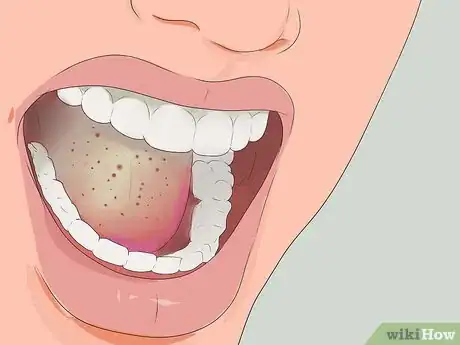


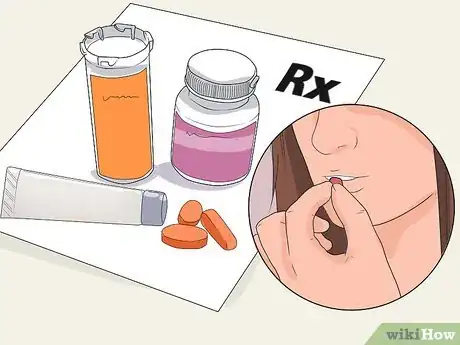
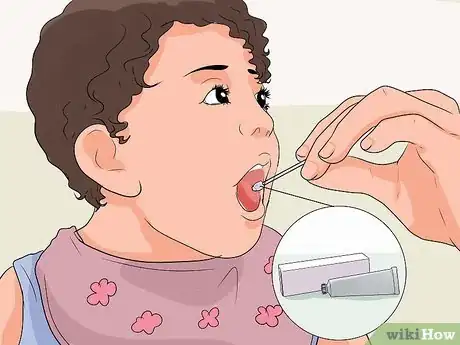
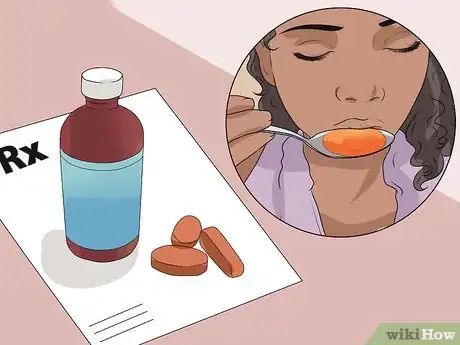
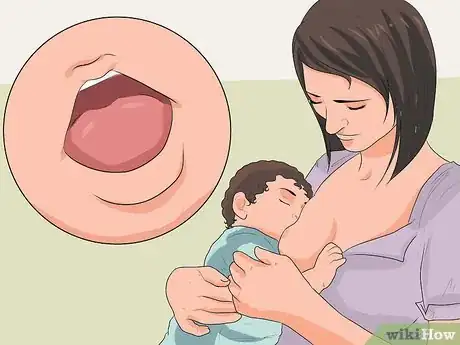

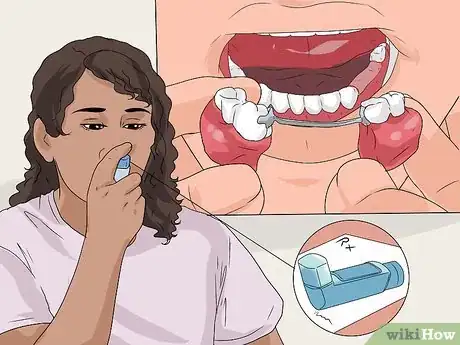

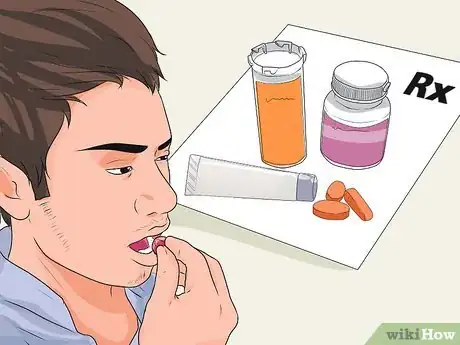

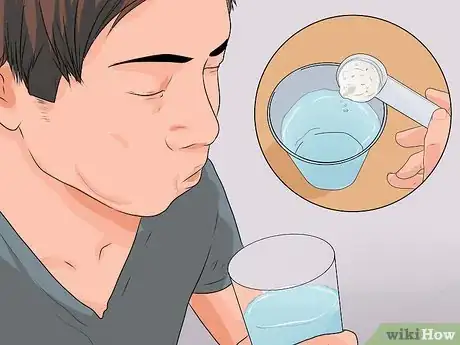
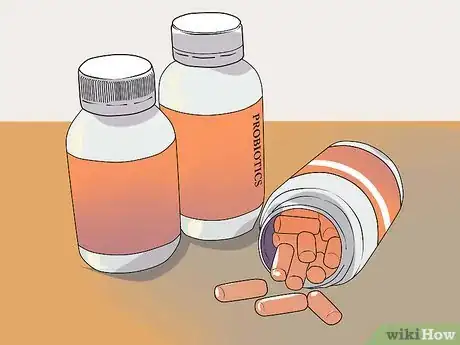
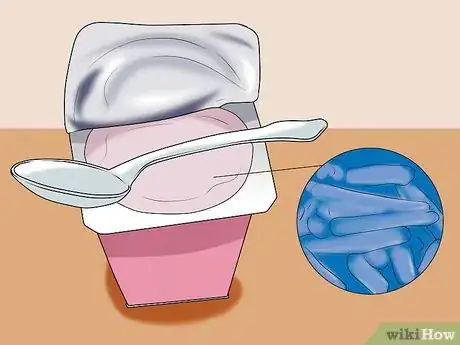
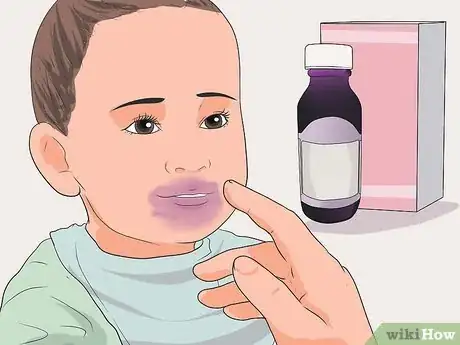
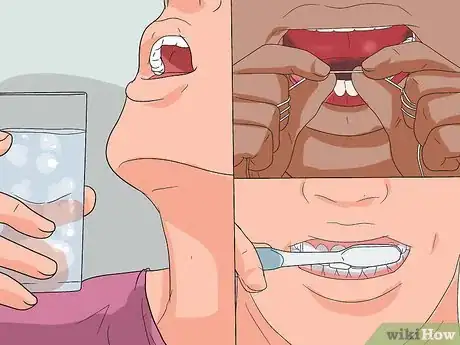
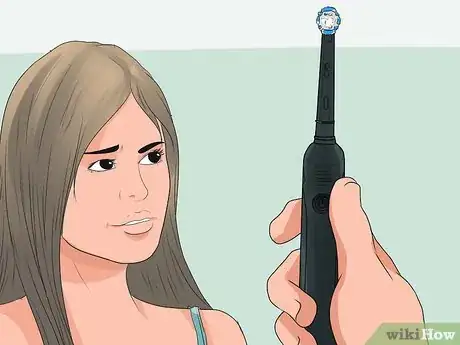
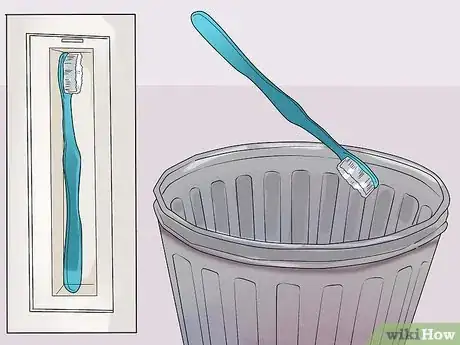
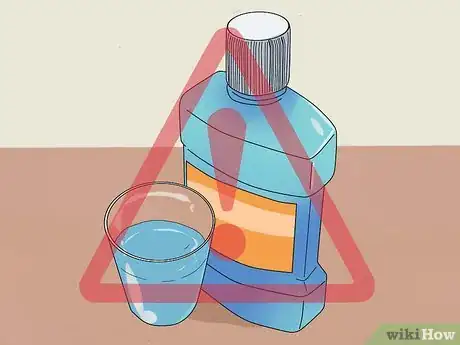

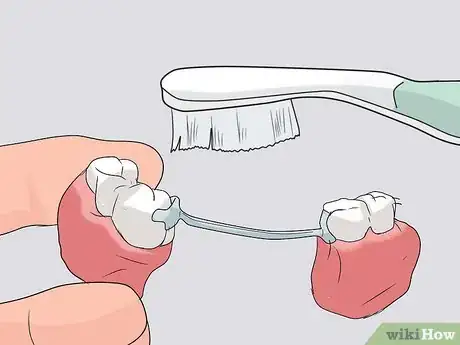
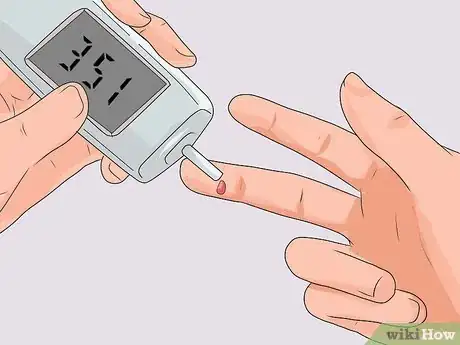
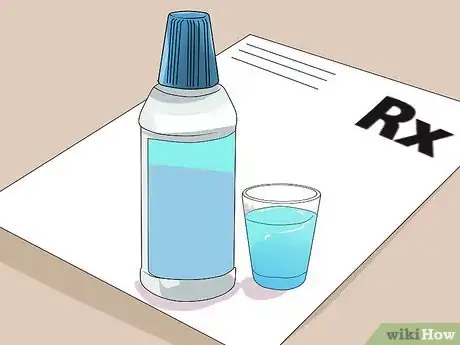

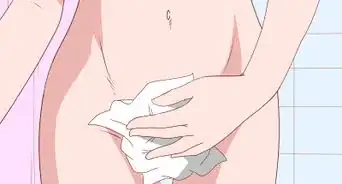


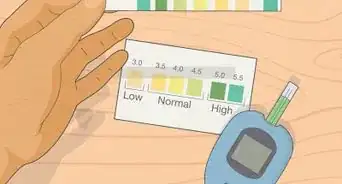
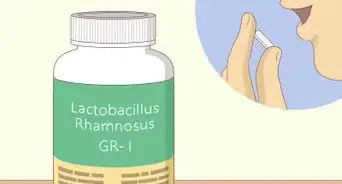

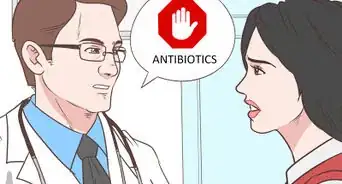

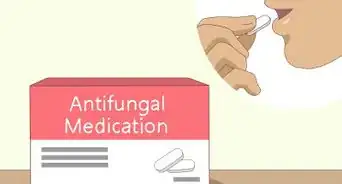
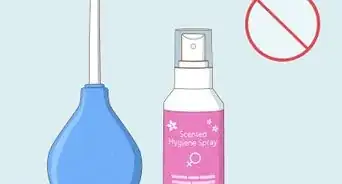
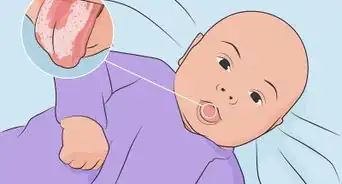


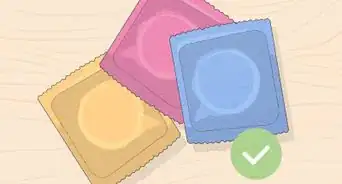









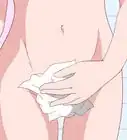


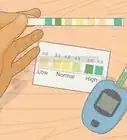



































Medical Disclaimer
The content of this article is not intended to be a substitute for professional medical advice, examination, diagnosis, or treatment. You should always contact your doctor or other qualified healthcare professional before starting, changing, or stopping any kind of health treatment.
Read More...